#robotics kits for beginners
Explore tagged Tumblr posts
Text
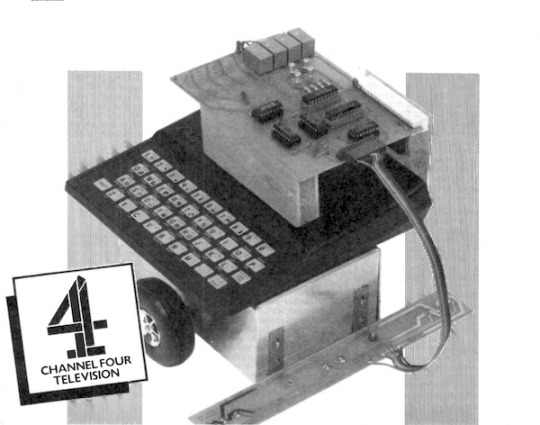
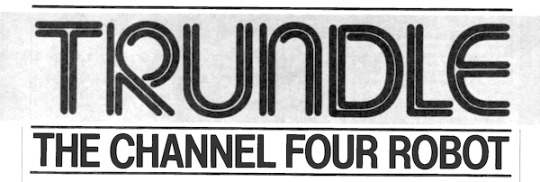
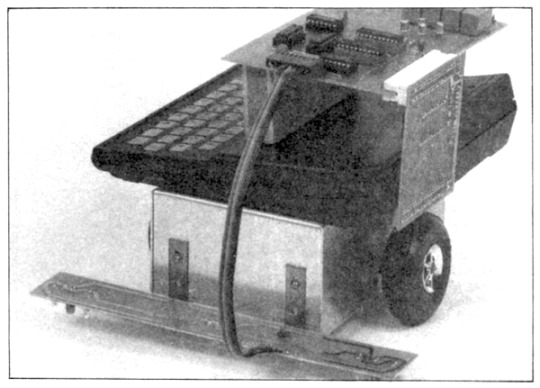
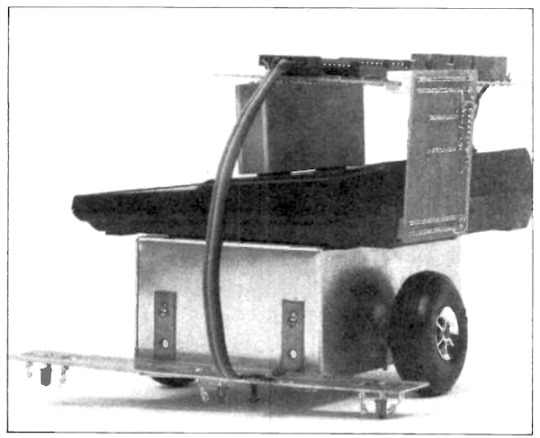
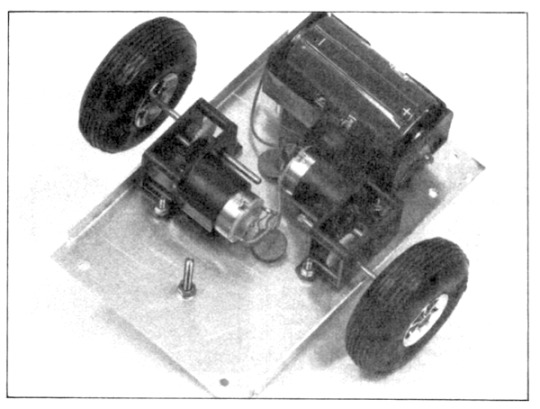

Trundle (1985) by Eddie Forrester & Robin Moorshead, Ilford County High School, UK. Full construction details of the Trundle robot feature in Channel 4's "4 Computer Buffs" every Monday at 5 p.m. for six weeks, starting 11th February 1985. "The Trundle package consists of an interface and memory expansion board for the ZX81 and the extra pieces necessary to make a ZX81 based 'Trundle' robot. The system is supplied in kit form with a comprehensive set of instructions. The interface was designed with the aim of encouraging participation in robotics and allowing other applications of interfacing. This exciting field is often avoided by both software writers as being too complicated electronically and by electronics enthusiasts as being too complicated from the programming angle. However, these fears are not justified. An interfacing project may be as hardware or software intensive as the designer wishes. A lack of skill in the hardware field can usually be made good with an extra piece of software and vice-versa. Trundle was designed to bring the beginner up to a reasonable level of competence with both a computer keyboard and a soldering-iron." – Trundle The Channel Four Robot, The Inside Story By Eddie Forrester & Robin Moorshead, The Maplin 'Electronics' Magazine, March to May 1985 (p16).
20 notes
·
View notes
Text

HGWFM 1/144 Gundam Lfrith
Gundam Lfrith!!! This is the final kit I wanted for my Witch From Mercury collection. Overall, I think most of the kits I've collected have been from this series, and I've really enjoyed all of them. The WFM line has really innovated in terms of what gunpla can be and it's a really nice thing to see Bandai doing.
I've actually already built a Lfrith kit, which you can see here. I customized it into a Hatsune Miku robot, but the build process was really enjoyable and I've wanted a non-customized one just to display for some time.
Overall, this kit has some of the best HG colour separation I've ever seen in a gunpla kit, with only some grey on the feet required to achieve screen accuracy, and minimal colour correction stickers.
Lfrith's GUND-bits can be stored on the rather bulky looking backpack unit, alongside the beam sabers and beam rifle. Two bits actually connect to the rifle to increase its range.


Like the Aerial's, the Lfrith's beam rifle also has a large beam blade mode, achieved using a trans-blue effect piece.
A nice thing about this kit is that it only has a single Permet effect area, with both a printed and sticker option for it. This means you can actually swap out the chest piece to display it in both active and deactive mode!


To celebrate Pride this year I've painted the GUND-but shield in the trans pride flag colours, which match really nicely with the kit's existing color scheme.
Overall this is a really beginner friendly kit and I definitely recommend it for any gunpla collector.
#gunpla#my gunpla#hg gunpla#plamo#model building#gundam#mobile suit gundam#mobile suit gundam the witch from mercury#witch from mercury#Lfrith#gundam lfrith#ericht samaya#prospera mercury#transgender#trans pride#pride#pride month
28 notes
·
View notes
Text
@glitchexmachina wants a starter.
“Tyson ya gotta check this out!” Harley yelled as she barged into the workroom looking for him. She said hello to every machine she passed, just in case they were all sentient. She was never sure around Tyson’s robots.
Harley grinned and held out a small robotic toy frog. It wasn’t nearly as advanced as some of the things Harley had seen Tyson make, but she was still proud of it. “I bought this robot kit thinkin’ it would be a cool Christmas present for ya but then I realized how… Beginner it was.. So I made it myself! You can even teach it with your voice. Watch this!” She set the toy on the table and leaned in with a grin. “Jump!” Harley held up a finger for Tyson to be patient as she waited for the toy to move. “Huh.. Maybe I didn’t do the voice thingy right..”
9 notes
·
View notes
Text
me: hey youtube, i'm really into gunpla lately, i like watching videos about gunpla kits. i have no privacy from you, you know all this already. so what's...
youtube: vinyl anime girl figurines in bikinis, you wanted?
me: no, that's not... gunpla. i like gundam plastic model kits. i wanna admire all the little detail in kits i don't have and learn some modelling techniques to apply to the ones i do.
youtube: ahh, gotcha. here's ww2 nazi germany panzer tank model kit reviews.
me: no! gundams! model kits of fictional giant robots! tiny 1/144 scale model kits of fictional giant 20m tall robots with laser swords they hold in their hands and put in cool poses! fictional. robot. kits.
youtube: this nazi half-track truck is considered one of the best 1/32 scale model kits for beginners, it comes with a full mechanised infantry support unit to paint, with accurate uniforms.
me: no.
youtube: best imperial japanese army fighter aircraft model kit 2023?
me: robots! fictional. robots.
youtube: ahh, best imperial japanese navy battleship model kit 2023.
me: listen, you...
youtube: a-10 warthog desert storm camouflage custom painted model kit!
me: STOP! i don't want vehicles of war! look i get it, gundam is a franchise about the horrors of war and we all missed the point in favour of 'wow cool robot' or lately 'omg cool yuri private school romance' or whatever, but it's not real. they're not real machines. it's not a real war, it's fiction. i can build these little guys as a distraction from the impending war here, from the existing wars, from the horrors of wars burned into my brain by live television news, i can love the zaku and zgok without conflating the republic of zeon with real world military superpowers seeking to dominate the globe and becoming a fascist fetishist because of anime robots.... i don't want to watch creepy old men salivate over scale model sculpted detail in planes with gattling guns that mowed down civilians, real human civilians, in real life wars. i want to watch energetic irish homosexuals rank the single-joined elbow posability of a bright red mech with a laser axe that'd be larger than a building, if it were real, which it is not, because these are toys for playing with, not historically accurate recreations of actually extant machines of horror and death. there is a difference! surely there is some confluence of keywords and user engagement metrics that can elicit an echo of understanding the difference in your unthinking algorithmic fever dream of signals????
youtube: ...
me: *panting with rage*
youtube: .....balloon titty anime bikini girl with the sculpted face of a scared crying child? it's a model kit!
19 notes
·
View notes
Text
Gear Up! A Beginner's Guide to Learning Robotics
Hey Tech Enthusiasts!
Are you fascinated by robots and want to dive into the world of robotics? Learning robotics can seem daunting, but with the right resources and mindset, you can get started!
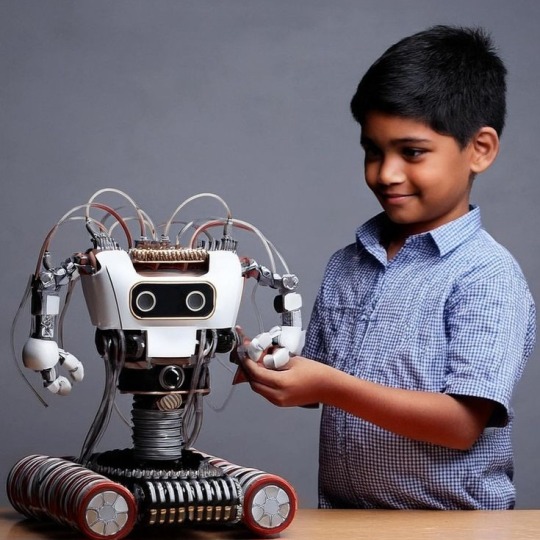
Step 1: Understand the Basics
- Familiarize yourself with programming languages like C++, Python, or Java
- Learn about electronics, circuitry, and microcontrollers (e.g., Arduino, Raspberry Pi)
- Get a grasp on mechanical concepts (e.g., kinematics, dynamics)
Step 2: Choose Your Path
- Robotics kits (e.g., Lego Mindstorms, Makeblock)
- Online courses (e.g., Coursera, edX, Udemy)
- Books (e.g., "Robotics, Vision & Control" by Peter Corke)
- Join online communities (e.g., Reddit's r/robotics, r/learnprogramming)
*Step 3: Practice & Build*
- Start with simple projects (e.g., line follower, robotic arm)
- Experiment with sensors, actuators, and control systems
- Join robotics competitions or hackathons
Step 4: Network & Learn from Others
- Attend robotics conferences, meetups, or workshops
- Collaborate with fellow robotics enthusiasts
- Participate in online forums
Resources:
- Code.org's Robotics Course
- Robotics Academy
- Robot Operating System (ROS)
Inspiration:
- Boston Dynamics' robots
- NASA's Robotics Alliance Project
- Robot Wars
Conclusion:
Learning robotics takes time, patience, and dedication. Stay curious, persistent, and creative!
What's your favorite robotics project or resource? Share in the comments!
[Reblog if you're interested in robotics!]
3 notes
·
View notes
Text
5 Arduino Courses for Beginners
Robotics, automation, and do-it-yourself electronics projects have all been transformed by Arduino, an open-source electronics platform. Entering the world of Arduino may seem intimidating to novices, but the correct course may make learning easier and more fun.
Arduino Step-by-Step: Getting Started (Udemy)
This extensive Udemy course is designed for complete novices. It provides an overview of Arduino's fundamentals, describing how the platform functions and assisting students with easy tasks like using sensors and manipulating LEDs.
Key Highlights:
thorough explanations for novices.
practical projects with practical uses.
instructions for configuring and debugging your Arduino board.
Introduction to Arduino (Coursera)
The main objective of this course is to introduce Arduino programming with the Arduino IDE. It goes over the fundamentals of circuits, programming, and connecting various parts, such as motors and sensors.
Key Highlights:
instructed by academics from universities.
access to a certificate of completion and graded assignments.
Concepts are explained in length but in a beginner-friendly manner.
Arduino for Absolute Beginners (Skillshare)
For those who want a quick introduction to Arduino, this brief project-based course is perfect. You'll discover how to configure and program your Arduino board to produce interactive projects.
Key Highlights:
teachings in bite-sized chunks for speedy learning.
simple projects for beginners, such as sound sensors and traffic light simulations.
Peer support and community conversations.
Exploring Arduino: Tools and Techniques for Engineering Wizardry (LinkedIn Learning)
This course delves deeply into Arduino programming and hardware integration, drawing inspiration from Jeremy Blum's well-known book. It is intended to provide you with the skills and resources you need to produce complex projects.
Key Highlights:
advice on creating unique circuits.
combining displays, motors, and sensors.
Code optimization and debugging best practices.
Arduino Programming and Hardware Fundamentals with Hackster (EdX)
This course, which is being offered in partnership with Hackster.io, covers the basics of Arduino hardware and programming. You may experiment with real-world applications because it is project-based.
Key Highlights:
Course materials are freely accessible (certification is optional).
extensive robotics and Internet of Things projects.
interaction with teachers and other students in the community.
Arduino is a great place to start if you want to construct a robot, make a smart home gadget, or just pick up a new skill. The aforementioned courses accommodate a variety of learning preferences and speeds, so every novice can discover the ideal fit. Select a course, acquire an Arduino starter kit, and set out on an exciting adventure into programming and electronics!
To know more, click here.
2 notes
·
View notes
Text
The best kids gift ideas for Christmas 2023
The holiday season is upon us, and it's that time of year when the joy of giving brings smiles to our little ones' faces. Finding the perfect gift for kids can be a delightful yet challenging task. To help ease the stress of holiday shopping, here's a curated list of the best kids' gift ideas for Christmas 2023 that will spark joy and imagination:

STEM Toys
STEM toys engage children in science, technology, engineering, and math concepts through play. Look for kits that offer hands-on learning experiences like robotics, coding, or science experiments. These toys are both educational and entertaining, making learning a delight.
Outdoor Toys
Encouraging outdoor play is vital for kids' physical health and overall development. Consider gifting kids scooters, bicycles, or roller skates to inspire adventure and exercise while allowing them to explore the outdoors.
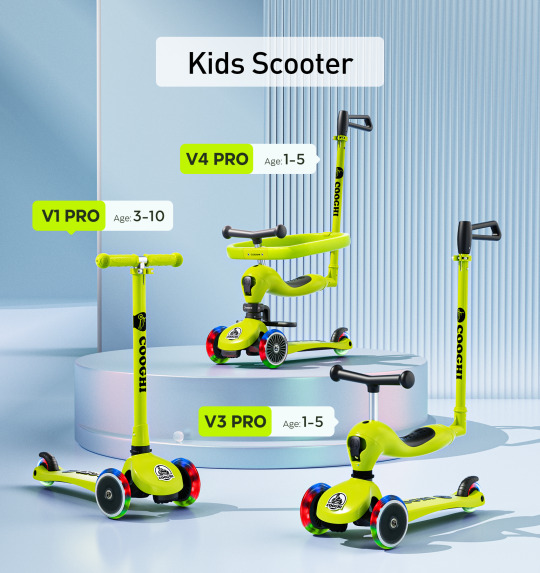
Art Supplies
For the budding Picassos and Van Goghs, art supplies are a gateway to self-expression. Art sets, sketchbooks, paints, and different mediums can nurture their creativity and provide a means to express their imagination freely.

Board Games and Puzzles
Board games and puzzles are timeless classics that promote critical thinking, strategy, and social interaction. Choose games suitable for their age group and interests, fostering bonding moments and cognitive development.
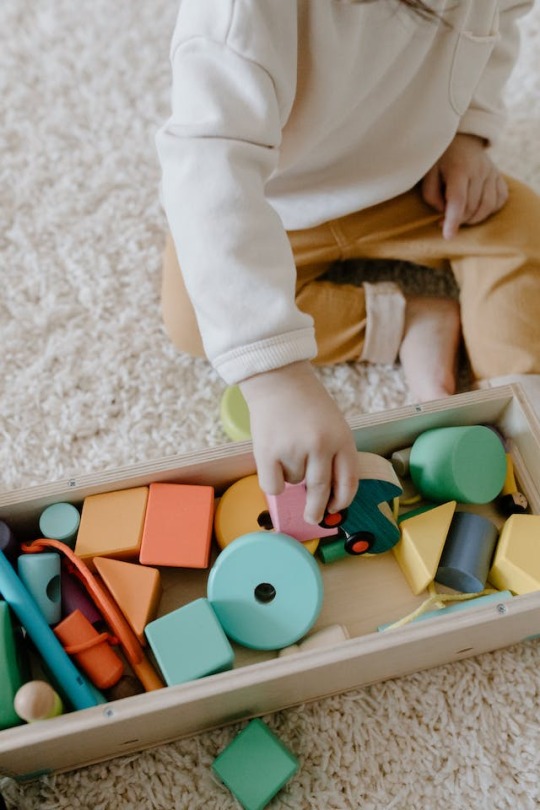
Musical Instruments
Introducing kids to musical instruments cultivates a lifelong appreciation for music. Whether it's a beginner's keyboard, a mini drum set, or a ukulele, these gifts can spark a passion for melody and rhythm.
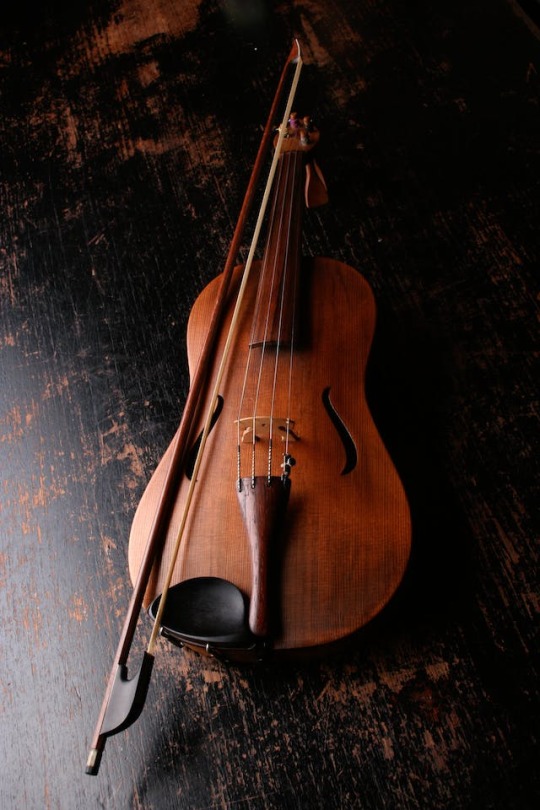
Dolls
Why it’s great: Dolls offer companionship and imaginative play. If they're fans of anime, gifting their favorite characters in doll form can inspire storytelling and imaginative adventures.

Gardening Tool Kit
A gardening tool kit encourages kids to explore nature and develop a green thumb. It’s an interactive way to teach responsibility, patience, and the wonders of watching something grow.
This Christmas, choosing the perfect gift involves understanding a child's interests, fostering their development, and sparking joy. Whether it’s igniting their curiosity with STEM toys, encouraging outdoor exploration, nurturing creativity through art, fostering social skills with games, or introducing new hobbies, the best gifts are those that inspire and captivate young hearts and minds. Embrace the joy of giving and watch as these gifts light up their world with wonder and excitement.
#Christmas 2023#Christmas gift#Christmas gifts for kids#kids scooters#Cooghi#best gifts#best christmas gifts
8 notes
·
View notes
Video
youtube
Top 3 Science-Based STEM Kits For Kids Aged Under 10
Learning science only through theory can be a little boring, especially for kids. Sometimes creating or experimenting can be a daunting and tiring task for kids. But worry not! today, Stupid Labs brings you the top 3 amazing Stem kits for kids that will make science easy and fun for kids.
STEM kits are wonderful tools for kids, providing a fun and engaging way to learn about science, technology, engineering, and math. These kits come with all the materials needed to complete exciting projects, making it easy for kids to dive into hands-on learning.
Electromagnetic Robotic Kit
The Electromagnetic Robotic Kit is awesome for kids! It helps you learn about electromagnetism and robotics by doing fun projects. You can build and program your own robots, which boosts creativity and problem-solving skills. The kit has easy-to-follow instructions, so it’s great for beginners. Overall, it’s a fantastic learning tool.
Blix Queaky Product
The Blix Queaky is a cool STEM kit that teaches you about electricity. You can use it to find out which materials conduct electricity and which don’t.
3D Printing Pen
A 3D printing pen is a fun tool that lets kids draw in 3D. It helps you think creatively and improve your art skills. The pen is easy to use and works with different materials. It’s perfect for creative projects and a great addition to any STEM kit collection.
3 notes
·
View notes
Note
Aw man, PROXY (the combat training droid) really would fit so well with the DRverse. Like his introduction scene has him randomly ambush Starkiller while using the Obi-Wan training program (complete with hologram/hard-light tech to make him appear as Obi-Wan did during the Clone Wars). And they just playfully banter like "Huh, didn't even know you still had that program, PROXY", "Oh, I thought if I surprised you with an old one, I might finally kill you master". To which Stakiller's like "Lol, better luck next time buddy". The whole relationship just seems exactly like what you'd get with Nagito having a robot as his only friend.
The fact that Vader had it fitted with an Obi-Wan program (as well as a Darth Maul program that's revealed later on) is both logical and weirdly hilarious to me. Like of course he'd want to prepare his Secret Apprentice to know how to fight his old master's lightsaber style, since he's still out there at this point in time. But it's just so hilariously obsessive. Actually PROXY later takes Vader off-guard by using it on him in a heroic sacrifice to save Starkiller (he's revealed to have been rebuilt in the sequel though).
Oh! And speaking of lightsaber styles...what do you think the DR cast members would pick as their main one if they were a Jedi, Sith, or some other lightsaber wielder? I'm not sure how much you know about those, so here's a rundown just in case. The whole made-up martial arts thing is part of the lore I find so endearingly stupid in an awesome way.
Form I/Shii-Cho is the beginner's form. Pretty much every Jedi is required to learn this one first, since it's the foundation for all the others. It was made in a time when they were transitioning from metal swords to lightsabers, and so it focuses a lot on non-lethal disarmament. As well as combatting multiple opponents. It's considered a bit clumsy and unrefined compared to its successors. But a handful of specialists of the form like Kit Fisto, were known for being very fluid and hard to predict.
Form II/Makashi is the most dueling-centric. With a focus on elegant, focused, and precise strikes. It was developed in response to the need for a lightsaber-to-lightsaber form when Dark Jedi became more prevalent. And as a result it fell out of widespread use when the Sith were thought extinct. With Jedi actually having to ask permission for training in it. It's two major flaws though are that's not ideal for multiple opponents, or against loads of blasters. Count Dooku is considered to be perhaps the greatest Makashi specialist, and managed to partly iron out of its weaknesses.
Form III/Soresu opts for a "stone wall" strategy. Being developed to combat massive numbers of blaster-wielding opponents. And allow the user to deflect dozens of bolts per second. And against other lightsaber-wielding opponents, the strategy is to tire them out with an unbreakable defense and then finish things with a decisive blow. It's polarizing among the Sith, as many view it as a weakling's form. Though the smarter ones like Darth Bane had a respect for it, seeing that there were some clear advantages. Obi-Wan is the most famous specialist, and that factored into the decision to send him after General Grievous.
Form IV/Ataru is kind of like the "fragile speedster" style. Since it heavily focuses on acrobatics for quick leaping strikes. Pretty good at quickly taking down single opponents, but not so much in prolonged fights, or while fighting in enclosed spaces. Not great against blasters either. Yoda and Ahsoka are the most notable specialists for it. Qui-Gon and Obi-Wan were too, though the latter switched to Soresu after finding Ataru didn't work so well for him against Darth Maul.
Form V/Shien is sort of like a more aggressive branch of Soresu. With the focus going from deflecting blaster bolts to redirecting them back at the enemy. It also has a more advanced dueling-centric variant called Djem So, which was made as an answer to Makashi. Requiring a lot of physical power from the user, the aim of it is to defend and then unleash a massive counter-attack of overwhelming strikes. Although they both had expertise in all forms, it was Anakin and Luke's preferred one. With Anakin actually going all in on transitioning from Shien to Djem So after losing to Dooku the first time. Other known specialists include Plo Koon, Aayla Secura, Darth Bane, and the legendary Ulic Qel-Droma.
Form VI/Niman was created as an all-rounder form. The idea being to take all the elements from the previous 5 and merge them into a single balanced form. In practice this ultimately led to most practitioners being just average in all fields, with no real strengths. It tended to be favored by Jedi who were more devoted to diplomacy and study. HOWEVER, mastered Niman is another story entirely. As its few specialists (who dedicated at least 10 years of determined study to it) had a style that was great in all fields, and had no weaknesses. With excellent skill at combining Force-based attacks into the style. Those specialists being legendary duelists like Exar Kun, Darth Krayt, and possibly Revan.
Form VII/Juyo is the last and most controversial of them. For its extreme viciousness and the intentional use of a wielder's emotions to fuel attacks. A highly aggressive that's like a more wild and untamed Makashi. Obviously it was the style most heavily favored by the Sith, and was the primary style of Darth Maul and Starkiller (who interestingly were both voiced by Sam Witner). Among the Jedi it was borderline taboo, and sanctioned to the point that only very disciplined masters were given permission to study it. Juyo also had a special variant developed by Mace Windu called Vaapad. Which channeled both his own inner darkness and his opponent's fury through himself, and convert those into attacks. This special technique might have factored into him managing to overpower Palpatine.
And of course there's Jar'Kai, which just means dual-wielding. Technically a lot of characters have used it, though only a handful do so regularly. Those beings ones like Ahsoka, Asajj Ventress, Starkiller's clone, Revan, and Darth Krayt. Tends to overlap a bit with Niman and Ataru.
...Lol, got a bit carried away with that explanation. Anyway, I personally reckon Izuru would be a dual-wielding Niman king. As well as being one of the few people to master Vaapad. Makoto I would see as a Soresu guy. And I'd probably leans towards Hajime favoring Djem So.
Wow, yeah, I think, if we're speaking comparatively, I know nothing about Star Wars. 🤣 This is all very fascinating! And yes, Soresu definitely seems to be compatible with Makoto's whole deal. And the fighting styles for Izuru and Hajime also seem really apt.
2 notes
·
View notes
Text
Last Monday of the Week 2023-06-26
I have learned so many new things about the specifics of the GPL against my will.
Listening: Remembered that I was kind of hyped for Rodrigo y Gabriela's new album "In Between Thoughts... A New World" which is just a lot of showing off on the guitar. Very much the soundtrack to a movie that doesn't exist.
Reading: Finally remembered the books I was reading long enough to finish Children of Time. Bizzare ending, not bad, but I can see why this might lead to a less well received second book. Spidertech gets increasingly ridiculous in ways that are just on the balance of predictable and ridiculous that I find very funny. They do computing on ants. Also there is an entire society of intelligent mantis shrimp in the periphery of this book. They need a spin-off.
Started Kaiju Preservation Society by Scalzi. I have not in fact read very much Scalzi but this one did sound funny and I was down for sci-fi comedy.
Watching: Continuing the Fast and Furious Watch, with The Fast And The Furious (2009) which is the second movie called that. This feels like it's resetting the storyline so that they can go wherever they're planning on going with this. I liked it a normal amount! There is a level of restraint on display that does not come to mind when I tell you that within 5 minutes of the movie starting, Vin Diesel has driven a car underneath an exploding fuel tanker truck.
Playing: a lot of Mars First Logistics, the recently-in-early-access mars cargo robot building game.

A good balance of constrained and freeform, parts are slowly meted out as you progress through the "story missions" in as much as those exist, which sees you building a rocket, a biosphere, a rover soccer stadium, a resort, etc. out of ever more unwieldy components in ever more inhospitable terrain.
At times navigation can become just straight up ridiculous, forcing you to either charge up and down steep hills with unstable cargo or attempt to gradually work your way the slow way around. A very forgiving vehicle reset and a less forgiving cargo reset goes a long way to making this manageable. You always have the option to strap rockets to your vessel and cast yourself to the wind, which comes in handy pretty often.
Making: Sat down with FreeCAD and sketched out the apartment for future use, now I need to do the furniture. FreeCAD is not the best or the worst CAD package I've used but it's basically the only one that runs on Linux, unless you have several thousand dollars to drop on Siemens NX. A halfhearted attempt to throw the skeleton of the apartment at povray resulted in this brutalist masterpiece.

Tools and Equipment: I got the iFixit Prying and Opening Tool Kit which is a set of plastic wedges, spudgers, and cards intended for opening electronics. I've always just kind of done this with whatever is lying around and I gotta say it's a big improvement. They're decidedly consumable parts, but they're also cheap enough to justify that.
8 notes
·
View notes
Text
EXG Synapse — DIY Neuroscience Kit | HCI/BCI & Robotics for Beginners
Neuphony Synapse has comprehensive biopotential signal compatibility, covering ECG, EEG, EOG, and EMG, ensures a versatile solution for various physiological monitoring applications. It seamlessly pairs with any MCU featuring ADC, expanding compatibility across platforms like Arduino, ESP32, STM32, and more. Enjoy flexibility with an optional bypass of the bandpass filter allowing tailored signal output for diverse analysis.
Technical Specifications:
Input Voltage: 3.3V
Input Impedance: 20⁹ Ω
Compatible Hardware: Any ADC input
Biopotentials: ECG EMG, EOG, or EEG (configurable bandpass) | By default configured for a bandwidth of 1.6Hz to 47Hz and Gain 50
No. of channels: 1
Electrodes: 3
Dimensions: 30.0 x 33.0 mm
Open Source: Hardware
Very Compact and space-utilized EXG Synapse
What’s Inside the Kit?:
We offer three types of packages i.e. Explorer Edition, Innovator Bundle & Pioneer Pro Kit. Based on the package you purchase, you’ll get the following components for your DIY Neuroscience Kit.
EXG Synapse PCB
Medical EXG Sensors
Wet Wipes
Nuprep Gel
Snap Cable
Head Strap
Jumper Cable
Straight Pin Header
Angeled Pin Header
Resistors (1MR, 1.5MR, 1.8MR, 2.1MR)
Capacitors (3nF, 0.1uF, 0.2uF, 0.5uF)
ESP32 (with Micro USB cable)
Dry Sensors
more info:https://neuphony.com/product/exg-synapse/
2 notes
·
View notes
Text
Development Blog: Timeless Epoch
Blog #15 – Finishing the Substance Painter Tutorials
Wrapping Up the Tutorial Series
youtube
As part of my commitment to improving my texturing skills, I recently completed the “Substance Painter 2021 Getting Started” tutorial series on YouTube. The course walked me through the full process of texturing a sci-fi robot model—starting from the basics and gradually layering in more advanced features.
While the course content was structured for beginners, it provided a wealth of practical techniques that directly improved my day-to-day workflow in Adobe Substance 3D Painter.
What I Learned




Over the course of the tutorials, I picked up numerous tips and tricks that I’ve already begun to integrate into my Timeless Epoch workflow:
Quick Texture Application: How to apply and fine-tune materials rapidly while maintaining control over detail and variation.
Vertex Painting Use Cases: Understanding how vertex painting can be used in combination with masks to introduce unique surface wear or color variations.
Decals System: Gained a new appreciation for the decal feature in Painter, which allows for non-destructive placement of logos, damage, text, and dirt.
Normal Map Exploration: I took a deeper dive into how normal maps affect surface detail and how they can be used to fake depth and complexity without increasing geometry.
These aren’t just flashy features—they’re workflow enhancers that make a real difference when working with modular assets and large environment kits.
My Own Spin: Dark Angels Repaint

Once the course was complete, I retextured the robot from scratch, this time applying my own creative spin using the Dark Angels color scheme from Warhammer 40K.
The result was a satisfying exercise in artistic direction, as I explored how to balance grim, battle-worn surfaces with a cleaner, ceremonial aesthetic. It helped reinforce everything I’d just learned, but also challenged me to push further with custom mask creation, smart material blending, and stylized detailing.
A Bioshock Detour That Didn’t Happen (Yet)

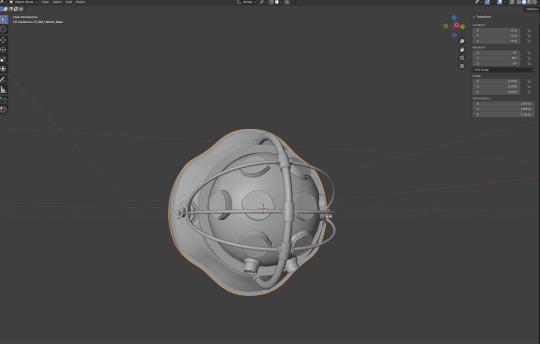

Originally, I had planned to texture a Bioshock-style helmet that I previously modeled as an additional exercise. But after some thought, I’ve decided to keep it as a separate project—one that I can polish and present independently, rather than squeezing it into the Timeless Epoch workflow.
This decision helps keep my current focus sharp and dedicated to the needs of this project, especially with modular asset creation and PCG design just around the corner.
What’s Next: Adobe Substance 3D Designer
With this part of my learning complete, I’m now setting my sights on Adobe Substance 3D Designer. The ability to create materials from scratch is an essential skill for any environment artist—and for the kind of architectural detail and stylization I want to achieve, procedural texture creation will play a major role.
This next step will complement my work in Painter and help me push even closer toward the visual targets I’ve set for Timeless Epoch.
Resources:
Adobe Substance 3D (2024). Adobe Substance 3D Designer for Beginners | Course Overview | Adobe Substance 3D. [online] YouTube. Available at: https://www.youtube.com/watch?v=At3FoFcuN6k&list=PLB0wXHrWAmCxBw92VSRjqsbqYXgkF8puC
ArtStation. (2025). A Plague Tale: Requiem - Chapter III, Olivier Cannone. [online] Available at: https://www.artstation.com/artwork/4XKW5Y [Accessed 23 Apr. 2025].
ArtStation. (2025). A Plague Tale: Requiem – Concept arts part 2, Tom Hisbergue. [online] Available at: https://www.artstation.com/artwork/140zlZ [Accessed 23 Apr. 2025].
ArtStation. (2025). Frostpunk 2: Environment Concept Arts, ZooWe (Tsu-Wei) Chen. [online] Available at: https://www.artstation.com/artwork/3EeBgo [Accessed 23 Apr. 2025].
ArtStation. (2025). Isaac Oster. [online] Available at: https://www.artstation.com/isaacoster [Accessed 23 Apr. 2025].
ArtStation. (2025). Jef Simons. [online] Available at: https://www.artstation.com/jef_simons [Accessed 23 Apr. 2025].
ArtStation. (2025). joannie leblanc. [online] Available at: https://www.artstation.com/joannie [Accessed 23 Apr. 2025].
ArtStation. (2025). Michael Chae. [online] Available at: https://www.artstation.com/michaelchae [Accessed 23 Apr. 2025].
Artstation.com. (2025). Page Restricted. [online] Available at: https://www.artstation.com/tonch-la-gonch [Accessed 23 Apr. 2025].
ArtStation. (2025). Shinta Lyu. [online] Available at: https://www.artstation.com/kiritsugu [Accessed 23 Apr. 2025].
ArtStation. (2025). Tanguy Talbert. [online] Available at: https://www.artstation.com/gaxxx [Accessed 23 Apr. 2025].
ArtStation. (2025). TRACE studio. [online] Available at: https://www.artstation.com/trace_studio [Accessed 23 Apr. 2025].
ArtStation. (2025). V Rising - Environment Props, Linn Wilhelmsson. [online] Available at: https://www.artstation.com/artwork/rlDqVO [Accessed 23 Apr. 2025].
baldursgate3.game. (n.d.). Baldur’s Gate 3. [online] Available at: https://baldursgate3.game
Epic Games (2024). Procedural Content Generation Overview | Unreal Engine 5.5 Documentation | Epic Developer Community. [online] Epic Games Developer. Available at: https://dev.epicgames.com/documentation/en-us/unreal-engine/procedural-content-generation-overview
OpenAI (2025). ChatGPT. [online] chatgpt.com. Available at: https://chatgpt.com.
Procedural Minds - YouTube. Creating Procedural Content. [online] Available at: https://www.youtube.com/@Procedural_Minds
Stuart, K. (2022). A beginner’s guide to Elden Ring: what it is and why you should play it. The Guardian. [online] 2 Mar. Available at: https://www.theguardian.com/games/2022/mar/02/elden-ring-beginners-guide-open-world-adventure
Substance Painter 2021. Getting Started - Course Introduction. [online] Available at: https://www.youtube.com/watch?v=-ZbmRsOnApk&list=PLB0wXHrWAmCwnqWfKdGEmbtSKN2EzvLrY
UNF Games (2024). Creating a village using Procedural Generation PCG in Unreal Engine 5 - Beginner Tutorial. [online] YouTube. Available at: https://www.youtube.com/watch?v=E5tsS-5sYYo [Accessed 23 Dec. Mar]
www.focus-entmt.com. (n.d.). A Plague Tale: Requiem - Focus Entertainment. [online] Available at: https://www.focus-entmt.com/en/games/a-plague-tale-requiem
War:, T. (2022). Total War: WARHAMMER III - Home. [online] Totalwar.com. Available at: https://warhammer3.totalwar.com [Accessed 23 Apr. 2025].
0 notes
Text
How Robotic Labs in Schools are Transforming Learning for Kids

Introduction
The way children learn is changing. Today, schools are shifting from traditional teaching methods to more engaging and interactive ways of learning. One of the biggest changes is the use of robotics labs. These labs help students learn important skills like problem-solving, critical thinking, and teamwork—all while having fun.
In this article, we’ll look at how robotic labs are transforming education, why they’re important, and how schools can benefit from setting one up.
What Is a Robotics Lab?
A robotics lab is a special classroom or area in a school where students get to build and program robots. These labs have everything students need—from robot kits and tools to computers and software. But more than that, they provide a creative space for students to explore science, technology, engineering, and math (STEM) in a fun, hands-on way.
With a proper Robotics Lab setup in school, students don’t just read about how things work—they actually build things and see how they work in real life.
Why Robotics Labs Matter
Robotics labs help students learn through experience. Instead of just listening to a lecture, students are involved in creating, building, testing, and improving their ideas. This kind of learning is called hands-on or experiential learning, and it’s proven to be much more effective—especially for young learners.
It also helps children who may struggle with traditional classroom methods by offering a different way to understand and engage with concepts.
Learning Key Skills for the Future
Technology is becoming a part of everything we do. From smartphones to smart homes, future jobs will require young people to be comfortable with tech. Teaching robotics in schools gives students a head start by helping them learn coding, logic, and how machines work.
By introducing a Robotic lab for kids, schools allow students to explore new ideas and develop skills that are already in demand in many industries—such as AI, programming, and engineering.
Benefits of Robotics Labs
Here are some clear ways robotics labs help children learn and grow:
Improved Creativity Students are encouraged to think outside the box and come up with their own robot designs and functions.
Better Problem-Solving When a robot doesn’t work as expected, kids learn to figure out what went wrong and how to fix it.
Stronger Teamwork Working in groups helps students communicate and collaborate—just like in real-life work situations.
Confidence Boost When a student successfully builds a working robot, it gives them a great sense of accomplishment.
Introduction to Coding Robotics offers a fun way to teach basic programming skills, even to very young learners.
Making Learning More Fun
Students are more likely to stay engaged when learning is interactive. Robots move, respond, and even complete tasks, which makes learning exciting. Kids who might not enjoy science or math in a traditional setting may find themselves hooked once they start building their own robots.
Adding a Robotics lab in your school not only boosts academic performance but also makes students look forward to coming to class.
How Schools Can Get Started
Thinking about setting up a robotics lab? Here are a few tips to help schools begin:
Start Small You don’t need to invest in expensive equipment right away. Start with beginner kits and grow the lab over time.
Train Teachers Make sure teachers feel comfortable using the tools and teaching basic robotics and programming.
Make It Fun Let students experiment, make mistakes, and explore. The goal is to inspire creativity, not just follow instructions.
Link It with Subjects Try to connect robotics activities to regular school subjects like science or math, so students see the real-world applications.
Real-Life Impact
Across the world, schools with robotics labs have reported improved student engagement and academic performance. Students become more confident, more curious, and more prepared for higher education and future careers.
In India, many schools are already adopting robotics labs as part of their education plans. Having a Robotics Lab for Kids in School in India helps bridge the gap between traditional learning and the tech-driven world we live in.
A Look Ahead
Robotics and STEM education aren’t just trends—they are the future. Schools that provide students with these opportunities are setting them up for long-term success. And for children, learning robotics isn’t just about building machines—it’s about building confidence and discovering new possibilities.
By investing in a Robotic lab for school, you're investing in the future of your students.
Conclusion
Robotic labs are reshaping the way children learn. They bring creativity, excitement, and real-world skills into the classroom. As we move into a more technology-focused future, it’s important that students don’t just use technology—they should understand how it works and how they can create it themselves.
Starting a robotics lab may seem like a big step, but the benefits far outweigh the cost. Every school that brings in robotics gives its students the tools to explore, invent, and succeed in the 21st century.
0 notes
Text
Unlock the Future with Robotics: Join the Best Robotics Classes in Mumbai!
In today's fast-paced world, technology and innovation drive the future, and robotics is at the forefront of this revolution. Whether you're a school student, a young learner, or someone curious about robotics, learning this dynamic field can unlock endless possibilities. If you want to get started, Technobotics Robotics Classes in Mumbai is the place to be. Let's dive into why these classes are perfect for your child's bright future!
Why Choose Robotics Classes for Kids in Mumbai?
Incorporating robotics into a child's education is no longer just an option but a necessity. Robotics for school students helps develop problem-solving skills, fosters creativity, and encourages teamwork—all of which are essential in today's competitive world. Technobotics offers hands-on learning experiences that engage young minds and prepare them for careers in fields like engineering, technology, and artificial intelligence (AI).

What Makes Technobotics Unique?
Technobotics, a leading techno school for robotics, offers a range of robotics courses for kids that go beyond the basic knowledge of coding and circuits. Here are some reasons why Technobotics Robotics Classes stand out:
Tailored Programs for All Levels: Whether your child is a complete beginner or already familiar with the basics of robotics, Technobotics offers classes that cater to different age groups and skill levels. From basic robotic kits to advanced autonomous robotics courses, your child will progress at a pace that suits them.
Hands-on Learning: Children not only learn theories; they also create robots! The curriculum is designed to improve creativity and practical skills. Students work on exciting projects, learning everything from Arduino programming to autonomous robotics. Students work on exciting projects, learning everything from Arduino programming to autonomous robotics.
Future-Focused Skills: Robotics involves a blend of Science, Technology, Engineering, and Mathematics (STEM), making it the ideal foundation for future careers. At Technobotics, students develop coding, problem-solving, teamwork, and innovation skills—traits that will set them apart in the tech world.
Safe and Interactive Learning Environment: The courses are designed to be enjoyable, engaging, and informative, allowing kids to explore their curiosity within a safe learning environment.
What Will Your Child Learn at Technobotics?
Technobotics offers a variety of robotics courses designed for different interests and expertise levels:
Autonomous Robotics (With & Without Programming): These courses teach students how to create robots that can operate independently without constant human control. Programming skills are also covered to enhance robot functionality.
Arduino Programming for Beginners: A beginner-friendly course that introduces kids to the programming world with Arduino, empowering them to create interactive robotics projects.
Breadboard Electronics: This course covers the essential electronics concepts needed to build functional robots.
With these well-rounded courses, your child will be on their way to mastering robotics and shaping a bright future in technology.
Why Robotics is the Future for Your Child
In an era where AI, robotics, and automation are transforming industries, kids must start learning about these technologies early on. Enrolling in Technobotics robotics classes for school students will give your child a competitive edge in their academic and professional pursuits. The skills learned will be invaluable in robotics, engineering, software development, and beyond.
Conclusion: Start Your Child's Robotics Journey Today!
If you want to give your child the best foundation in robotics, Technobotics Robotics Classes in Mumbai is your answer. With a focus on hands-on learning, innovative thinking, and a passion for technology, Technobotics is more than just a school—it's a launchpad for your child's future in robotics. Visit Technobotics Robotics Classes today to learn more and enrol your child in Mumbai's most exciting learning experience.
#robotics for kids#robotics classes#STEMEducation#robotics in mumbai#arduino programming#robotics courses#breadboard electronics for beginners
0 notes
Text
Unlocking the World of Creativity with Metal Puzzles: The Mecrob Experience
In today's fast-paced digital world, finding engaging and enriching hobbies is more important than ever. One pastime that has gained popularity for its unique blend of art, engineering, and mindfulness is the world of metal puzzles. These intricate creations are more than just entertainment—they’re a challenge for the mind and a feast for the eyes. Whether you’re a curious beginner or a seasoned puzzle solver, the innovative designs from Mecrob [Hongkong Leeze Whimsy Co., Ltd] offer an unmatched experience in this fascinating niche.
The Allure of Metal Puzzles
So what makes metal puzzles so captivating? At their core, they are intricate models crafted from thin sheets of metal, often stainless steel or other high-quality materials. Each puzzle comes in flat sheets that, when punched out and assembled, form stunning three-dimensional models. Unlike traditional cardboard puzzles, metal puzzle sets challenge not just your patience but also your spatial reasoning and dexterity.
There’s something incredibly satisfying about transforming a flat, shiny sheet into a lifelike replica of a world landmark, mechanical marvel, or fantasy creature. It’s an art form in itself—precise, elegant, and deeply rewarding.
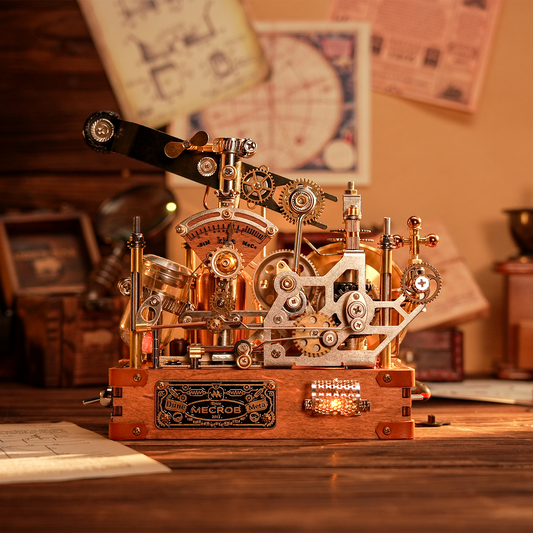
What is a 3D Metal Puzzle?
The term 3D metal puzzle refers to models that are built in three dimensions, providing an extra layer of complexity and visual appeal. These aren’t your average jigsaw puzzles. Each piece must be folded, twisted, and interlocked with precision. No glue is required; instead, assembly relies on cleverly designed slots and tabs.
Mecrob [Hongkong Leeze Whimsy Co., Ltd] has mastered the craft of producing premium 3D metal puzzle kits. From steampunk locomotives to mythical dragons and intricate architectural wonders, each model is a testament to the creativity and engineering prowess of its designers.
Why Choose Mecrob?
When it comes to metal puzzles, quality and design matter. That’s where Mecrob [Hongkong Leeze Whimsy Co., Ltd] stands out from the crowd. With a commitment to excellence and a flair for whimsical innovation, Mecrob has become a go-to name for enthusiasts around the globe.
Here’s why Mecrob is a trusted name in the metal puzzle world:
Precision Engineering: Each puzzle is laser-cut with extraordinary accuracy, ensuring a snug fit and smooth assembly.
Creative Designs: Mecrob offers an extensive collection of 3D metal puzzle designs, catering to a wide range of interests—from fantasy and science fiction to history and machinery.
Eco-Friendly Materials: The company uses recyclable and durable metals, aligning with sustainable values.
Step-by-Step Instructions: Clear and detailed manuals make the process enjoyable even for beginners.
Whether you’re building a medieval castle or a robotic insect, Mecrob [Hongkong Leeze Whimsy Co., Ltd] delivers an immersive and satisfying puzzle-building experience.

The Benefits of Building Metal Puzzles
Beyond the entertainment value, metal puzzles offer a variety of cognitive and emotional benefits:
Improves Focus: Assembling a metal puzzle requires deep concentration, which can help enhance attention span.
Develops Fine Motor Skills: Handling tiny metal parts strengthens hand-eye coordination and dexterity.
Encourages Patience: Solving a complex 3D metal puzzle teaches perseverance and discipline.
Relieves Stress: Many people find the process meditative and calming, similar to adult coloring books or model building.
Boosts Creativity: The act of constructing something from scratch sparks imagination and satisfaction.
In a world filled with distractions, these puzzles provide a rare opportunity to slow down and engage fully in a tactile, creative task.
A Perfect Gift for All Ages
Looking for a unique gift idea? Metal puzzles from Mecrob [Hongkong Leeze Whimsy Co., Ltd] are ideal for birthdays, holidays, or any occasion. They cater to hobbyists, collectors, engineers, artists, and anyone who loves a good challenge. With varying difficulty levels, there's something for everyone—from kids who are just getting started to adults who crave a serious brain teaser.
And once completed, these 3D metal puzzle creations double as beautiful décor. Proudly display them on your bookshelf, desk, or mantelpiece as a testament to your craftsmanship.
Tips for First-Time Builders
If you're new to the world of metal puzzles, here are a few tips to get started:
Start Simple: Begin with an easier model to get a feel for the techniques.
Use Tools: Tweezers, small pliers, and a magnifying glass can make assembly smoother.
Be Patient: Don’t rush. Take your time to enjoy the process.
Follow Instructions Carefully: Each step builds on the last, so precision matters.
Enjoy the Journey: The reward is not just the finished product, but the act of building itself.
Final Thoughts
Whether you're seeking a fulfilling hobby, a unique gift, or simply a way to challenge your mind, metal puzzles are a fantastic choice. And with the premium craftsmanship of Mecrob [Hongkong Leeze Whimsy Co., Ltd], you’re guaranteed a rewarding experience from start to finish.
Dive into the world of 3D metal puzzle building today, and let your imagination take shape—one piece at a time.
0 notes